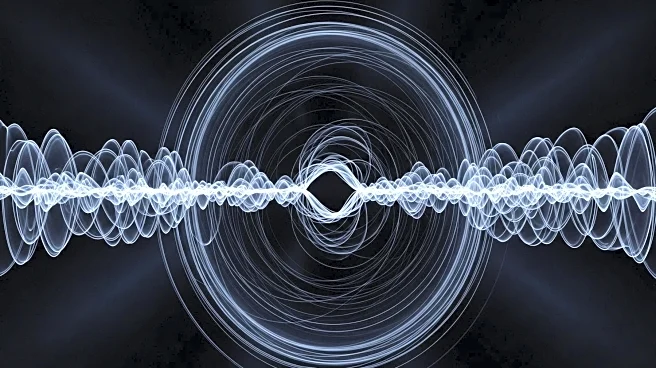What's Happening?
Theoretical physicists at the University of British Columbia have developed a new model that could potentially demonstrate the Schwinger effect, a quantum phenomenon where matter is created from a vacuum. Traditionally, this effect requires extremely high electric fields, making it impractical for direct experimentation. However, the researchers have proposed using a thin film of superfluid helium as an analog to the vacuum, with the flow of the superfluid acting as the electric field. This setup could lead to the spontaneous creation of vortex/anti-vortex pairs, akin to electron-positron pairs in the Schwinger effect. The findings, published in the Proceedings of the National Academy of Sciences, suggest that this model could provide insights into cosmic phenomena and enhance the understanding of superfluids and phase transitions in two-dimensional systems.
Why It's Important?
This development is significant as it offers a new approach to studying quantum tunneling, a fundamental process in quantum mechanics with implications across physics, chemistry, and biology. By using superfluid helium, researchers can explore quantum phenomena that are otherwise inaccessible, such as those occurring in deep space or at the universe's inception. The model also challenges existing theories by demonstrating that the mass of vortices in superfluids is variable, which could lead to revisions in the understanding of quantum tunneling processes. This research not only advances theoretical physics but also opens up new experimental possibilities in the study of quantum systems.
What's Next?
The next steps involve conducting experiments to test the proposed model and verify the creation of vortex/anti-vortex pairs in superfluid helium. If successful, this could lead to further exploration of quantum phenomena using superfluids as analogs. The research may also prompt a reevaluation of the Schwinger effect and its applications, potentially influencing future studies in quantum field theory and condensed matter physics. Continued support from research councils and collaboration with other institutions could accelerate these developments.
Beyond the Headlines
The implications of this research extend beyond immediate scientific advancements. It highlights the potential of using analog systems to explore complex quantum phenomena, which could lead to new technologies and applications in various fields. The study also underscores the importance of interdisciplinary research, combining insights from quantum mechanics, condensed matter physics, and cosmology to address fundamental questions about the universe.











